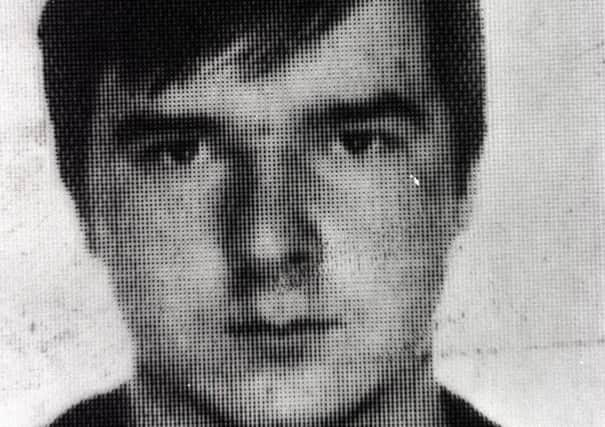RUC men to be reported over 1992 IRA death evidence


Mr Justice Horner said there was a basis for concluding the officers, known only as M and Q, may have perverted the course of justice and committed perjury while providing testimony at the inquest for IRA man Pearse Jordan.
Although he was not duty-bound to report the matter, the judge told Belfast High Court he intended to exercise his discretion.
Advertisement
Hide AdAdvertisement
Hide AdJudge Horner said: “I do not consider that I am bound to report Officers M and Q to the director (of prosecutions).
“However, in the present case I intend to exercise my discretion and report Officers M and Q to the director because I consider that their behaviour sought to conceal the role played by DP2 in the events of November 25, 1992.
“This attempted concealment could have seriously impacted on this hearing.”
In his findings last month, Justice Horner had described DP2 as being “a well-known activist who had been a quartermaster for [the] PIRA”.
Advertisement
Hide AdAdvertisement
Hide AdThe judge rejected an application to lift the anonymity order preventing either officer being named.
Twenty-two-year-old Jordan was shot dead by a RUC officer in west Belfast in 1992.
He had been driving a stolen car suspected of ferrying IRA munitions when the fatal incident unfolded.
He failed to stop when ordered by police and sped away.
It stopped on the Falls Road when police rammed the vehicle, and Jordan was shot after getting out of the car when he tried to flee.
Advertisement
Hide AdAdvertisement
Hide AdEarlier this month, Justice Horner delivered findings in what was the third inquest into the death.
The coroner said he was not convinced either by family claims Jordan was shot in cold blood or by police insistence the RUC sergeant acted in self-defence.
Testimony from Officers M and Q, who were not directly involved in the shooting, was singled out for specific criticism.
The judge concluded that one or both of the officers had edited the original logbook and that they had been untruthful when asked about the identity of the driver of the stolen car.
Advertisement
Hide AdAdvertisement
Hide AdFollowing the judgment, lawyers for the Jordan family called for M and Q, to be investigated for allegedly perverting the course of justice and perjury.
They also requested both officers be identified.
During hearings earlier this month Karen Quinlivan QC representing the next of kin, argued that the judge should report the matter because of the seriousness of the alleged offences.
Meanwhile, the court was told the grant of anonymity to officers M and Q was made on the basis of an objectively verified risk to life.
The threat to officer M was assessed as moderate, namely that an attack is possible but not likely, but that in the event an appearance at the inquest without anonymity and screening the threat was likely to rise.
Advertisement
Hide AdAdvertisement
Hide AdThe threat to officer Q was deemed to be low but could rise to moderate or beyond if identified through court proceedings.
The judge said the measure was “necessary and proportionate” given the risk to life.
The investigation into Jordan’s shooting has been beset by controversy and delay.
In 2014, his family were awarded compensation for the lengthy hold-ups in concluding an inquest.
Advertisement
Hide AdAdvertisement
Hide AdAn original inquest was adjourned in 1995 after being only part heard.
Another probe was held in 2012, but the jury failed to reach consensus on a number of crucial issues – including whether the RUC used reasonable force.
Those findings were later quashed after the High Court identified a number of failings in how the probe was run.
In his findings, Justice Horner said it was impossible to determine with certainty what happened.